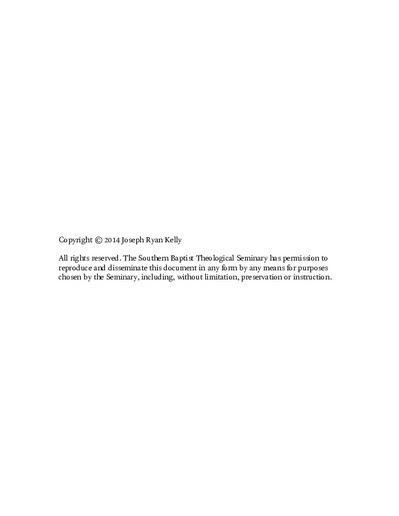| dc.contributor.advisor | Garrett, Duane A. | |
| dc.contributor.author | Kelly, Joseph Ryan | |
| dc.date.accessioned | 2015-03-31T13:49:25Z | |
| dc.date.available | 2015-05-22T15:25:10Z | |
| dc.date.issued | 2015-03-31 | |
| dc.identifier.uri | http://hdl.handle.net/10392/4861 | |
| dc.description.abstract | When biblical studies adopted the language of intertextuality, it began using it in conjunction with other vocabulary--inner-biblical exegesis and interpretation, echoes, allusion--all of which it uses to signify when a biblical text refers to another text that appears elsewhere in Bible. This study examines the way such academic language is shaped by and shapes the assumptions of biblical scholarship. It examines the nature of linguistic signs and applies the insights of this examination to evaluating the language of reference in the study of the Hebrew Bible. The study concludes that the language and theory of literary allusion is best suited for enriching academic discourse on the relationship of referential texts in the Hebrew Bible. It discusses methodological criteria for detecting allusion informed by a theoretically developed understanding of literary allusion. | en_US |
| dc.subject.lcsh | Intertextuality | en_US |
| dc.subject.lcsh | Intertextuality in the Bible | en_US |
| dc.subject.lcsh | Bible. Old Testament--Criticism, interpretation, etc. | en_US |
| dc.subject.lcsh | Bible. Old Testament--Study and teaching | en_US |
| dc.title | Intertextuality and Allusion in the Study of the Hebrew Bible | en_US |
| dc.type | Electronic dissertation | en_US |
| dc.type | Text | en_US |
| dc.publisher.institution | Southern Baptist Theological Seminary | en_US |

